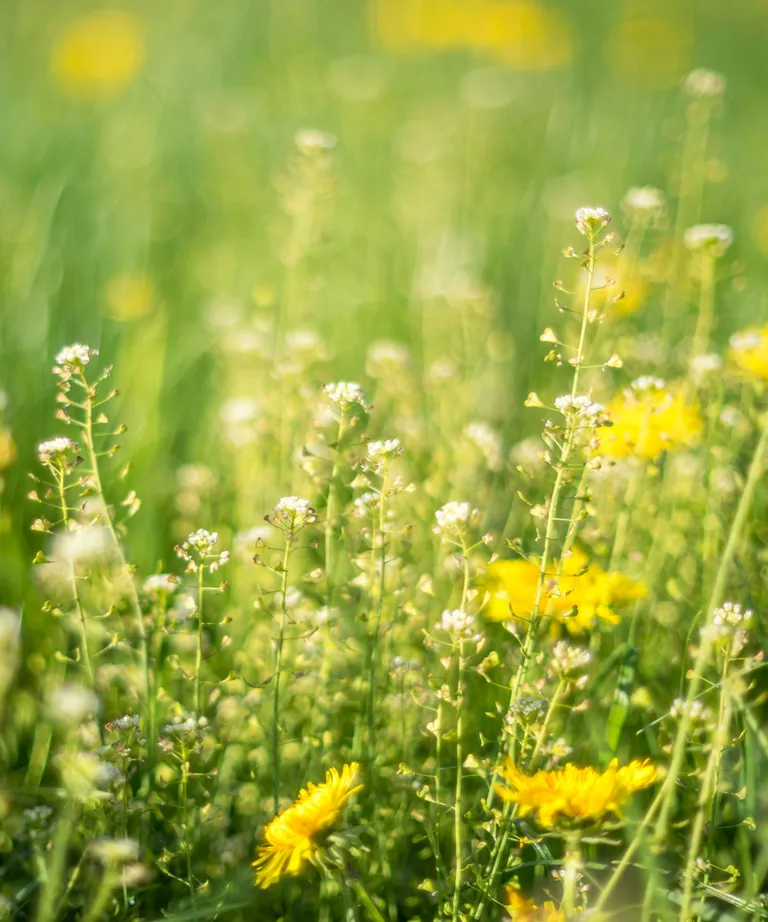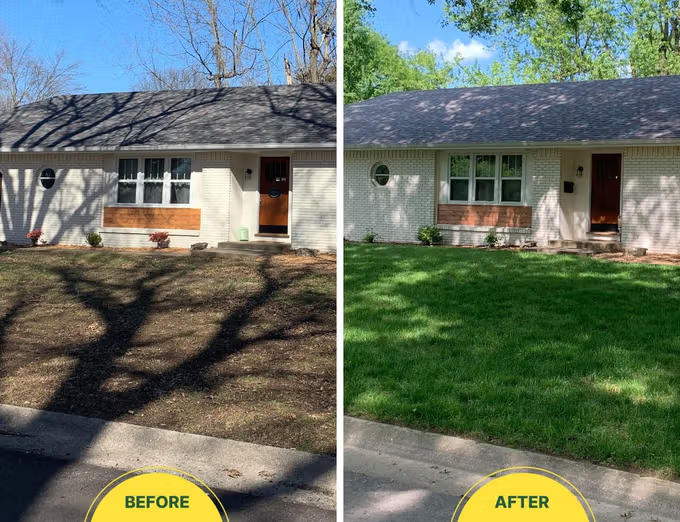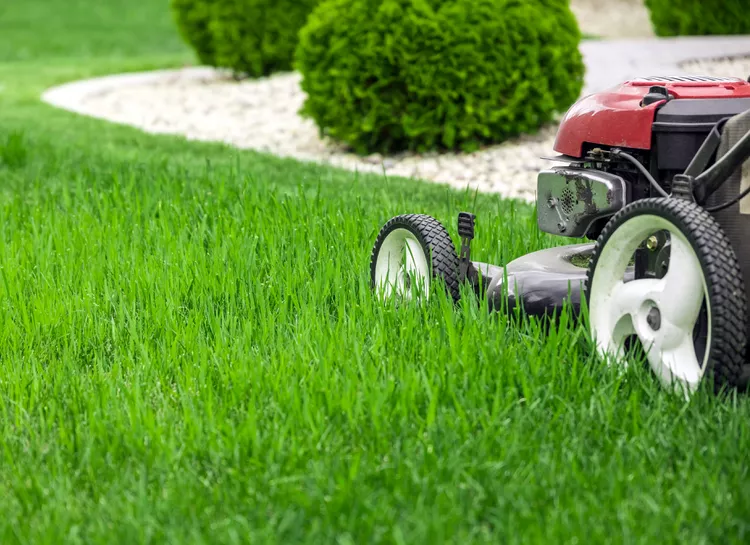Should You Fertilize Your Lawn Before or After It Rains?
Last Updated on April 7, 2025 by Duncan
You know that you should apply fertilizer to your lawn for it to be healthy. For this to happen, you need to ensure that you do it at the right time.
If you are wondering whether you should fertilize your lawn before or after it rains, you should know that you are better off doing it after it rains.
While you should fertilize your grass after it rains, you should wait for the grass blades to dry and the puddles on your lawn to seep into the ground.
If the weather is sunny for a few days after a rainstorm, it’s also a good idea to fertilize your grass at this time. Your fertilizer treatment will be more successful if you time it this way.
Dangers of applying fertilizer before it rains
Heavy rain can wash away fertilizer rather than simply distributing it throughout the soil. This is less true for compost but more likely for particle or granular fertilizers and liquid fertilizers.
This is harmful in and of itself since it deprives your lawns of the nutrition you have worked so hard to provide them.
It also causes environmental problems; fertilizer-laden runoff can pollute natural waterways and destroy native flora, fish, and wildlife. This may also result in significant fines from government bodies. And you don’t want this, do you?
Heavy rains can also compact soil, trapping fertilizers on the surface. This reduces their efficacy, but with a slower-release fertilizer, it can also produce “fertilizer burn” since the fertilizer is concentrated in one area.
Too much of anything is harmful, and too much fertilizer in one area can damage grass and other plants.
Too much fertilizer and too much rain might cause stress in your grass. Again, too much of a good thing can rapidly become evil, and in this situation, dumping a massive amount of nutrition and water on your lawn at the same time can cause stress and other health issues.
This is especially true for particle and granular fertilizers, which are frequently designed to dissolve and gradually release into the soil.
Why should you fertilize your lawn?
Fertilizers are collections of minerals that break down after being applied to the soil, releasing essential nutrients to the plants.
The grass in your yard is just like any other plant, and it requires vital nutrients.
Your grass, like all other plants, needs adequate amounts of water, oxygen, and nutrients to thrive. If your soil conditions are good, your grass may be able to absorb a lot of the nutrients it needs without much help from you. However, if your soil is in bad shape, whatever you try to grow, including grass, will require some assistance.
While 17 nutrients are required for all plant development, most types of fertilizer comprise a combination of three essential primary constituents.
- Nitrogen (N
- Phosphorus (P
- Potassium (K
The ratio of these three nutrients is printed on the side of the fertilizer bag, indicating how much of each is present. Nitrogen (N) encourages green leaves (or lawns). Phosphorus (P) promotes root and floral development. Potassium (K) helps to promote the general health of the grass.
Here’s the “why” of fertilization: Over time, nutrients seep out of the soil and must be replenished. Even the greatest soil will soon stop producing robust, healthy lawns if fertilizers are not applied on a regular basis.
How to fertilize your lawn
How to fertilize a wet lawn
What if you fertilize in the morning and the ground is wet with dew? This works excellently with liquid fertilizers and biostimulants. Spray and pray all day, especially if you’re using a backpack sprayer. Put on your waterproof boots and spray that damp lawn. This works for Hydretain as well. If the lawn is wet at the time of treatment, that is even better.
If you’re spraying from your backpack with the WG version of prodiamine, you can also apply it to a damp lawn.
Then, when you’re finished, water it in immediately.
Fertilizing with granular fertilizer
When using granular fertilizers, you should exercise caution. When applied to a wet lawn, some of it may adhere to the grass blades rather than penetrate the turf. This can sometimes result in “tip burn,” and it’s not very often, but it does happen.
Many people fertilize this way, but if you are concerned, make sure to apply it on a dry lawn.
Factors to consider when fertilizing the lawn
In addition to scheduling your fertilizer application, make sure you get the right one for your lawn and garden and apply it correctly.
If you use granular fertilizer, apply it straight to the soil rather than the grass blades. To avoid burns and bare areas, spread the fertilizer as evenly as possible across the lawn.
Another item to consider while fertilizing is the recommended dose. Just like you wouldn’t want to eat more vitamins than you need, more of a good thing isn’t suitable for your grass.
You can also minimize chemical burns to the roots by decreasing the prescribed amount for the initial feeding and keeping an eye on the lawn’s condition.
You should fertilize a disease-resistant lawn with strong roots beginning in the spring and continuing through the fall.
For the best outcome, use nitrogen-rich fertilizers in the spring to promote lush growth and bright color. In the summer, use any of the complex mineral fertilizers on the market—read the label and select one that has essential microelements like boron, iron, and molybdenum.
You should fertilize in the fall before the first frost and use phosphorus and potassium-rich fertilizers.
You and your lawn may take a rest during the winter because grass does not require fertilization.
Now that you’re pleased with yourself for taking such fantastic care of your lawn and garden do not undo what you’ve already done. To reduce stress or damage to your lawn, wait two to three days after fertilizer before mowing.
When is the best time to fertilize your lawn?
The optimal times to fertilize your lawn are in the spring and fall. That is when lawns are actively developing (depending on the species of grass). The optimum time to fertilize your lawn during those seasons is when you can switch on an irrigation system right away or when a little rain is expected. Fertilizers must be damp in order to benefit your grass, but not to the point of runoff.
If you’re using your irrigation system to water in fertilizer and find that water is starting to flow through the yard and into the street or storm drains, turn off the system and let the water soak into the soil. You should then wait a couple of hours before watering again.
The same way you should avoid fertilizing your lawn when expecting heavy rainfall is the same way you should avoid fertilizing your lawn when expecting draught.
In such a case, you’ll waste money on fertilizer because it will ultimately become inert, and whatever remains will just wash away in the next heavy storm.
You should be strategic in how you do your fertilization and, to be in an even better place, get the input of an expert.


